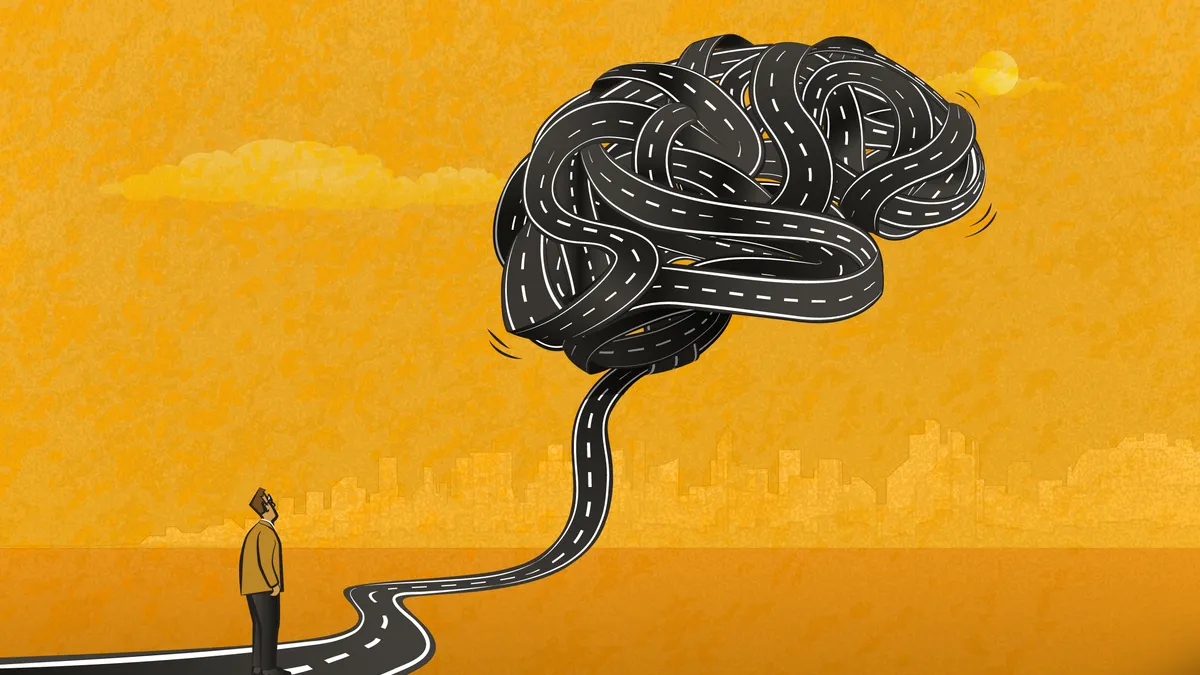Oxytocin, sometimes referred to as the “cuddle drug,” has bewitched scientists for decades. And interestingly, researchers were more deeply drawn to this hormone, which plays a critical role in human behavior, after observing a species of furry grassland rodents known as prairie voles.
Unlike many other rodents, these gerbil-like creatures are devoted partners and parents known for snuggling and lifelong matrimonial pairings. Only an estimated 3% to 5% of the more than 4,000 species of mammals are monogamous. But research by biologist Sue Carter uncovered that oxytocin, a feel-good hormone that fosters trust, romantic and social attachments, drives this tendency and that prairie voles have oxytocin receptors in spades. Unlike some of their non-monogamous relatives, many of these receptors are in the brain’s reward centers — prime real estate to promote bonding. In fact, when scientists blocked oxytocin in adult voles, their pair bonds splintered and social upheaval ensued.
Oxytocin can have similar effects in people. Naturally, scientists have set out to leverage this potential for years and have tested it as a treatment for a range of conditions including autism, pain and anxiety.
But today, the love affair with oxytocin has moved from committed to complicated thanks to a series of inconsistent studies and a growing sense that harnessing oxytocin’s power may be more challenging than it originally appeared.
A labor of love
Oxytocin’s role is complex and acts in concert with another hormone, vasopressin. Researchers found that an infusion of oxytocin doesn’t uniformly produce a warm and fuzzy or beneficial response. Depending on the context, the hormone may magnify antisocial behavior, such as envy. In one experiment, people who received oxytocin and then played a game of chance were more likely to gloat when they won and be jealous when they lost. Other studies found it can heighten aggression. Even the vaunted voles threw scientists a curveball.
A recent study found when researchers genetically altered prairie vole embryos so they would thwart oxytocin’s effects, the baby voles still grew up with the same social patterns. Curiously, their enviable pair bonds didn’t disintegrate as they did when scientists blocked oxytocin in adult voles. Researchers aren’t sure why, but speculated that while the hormone is a central player in social functioning, other behavioral mechanisms may have stepped up in its absence, allowing the animals to adapt.
“I think we’re talking some of the biggest problems of our time — migraines, obesity and social anxiety."

Dr. Seth Lederman
CEO, Tonix Pharmaceuticals
Despite these challenges and complexities, many researchers aren’t ready to give up on oxytocin. Tonix Pharmaceuticals is betting that a new formulation of oxytocin that includes a boost of magnesium may improve dose consistency and eliminate the variable results seen in previous research. Tonix’s CEO Dr. Seth Lederman says researchers are testing two investigational oxytocin formulations, TNX-1900 and TNX-2900, for conditions including migraine headaches, pediatric obesity, binge eating disorder, social anxiety and a rare genetic disease, Prader-Willi syndrome. If the formulations pan out, they could help advance oxytocin research in other areas as well, he said.
Oxytocin’s potential
Oxytocin was first discovered in 1906 by Sir Henry Dale, who used it to induce a contraction in a pregnant cat. Today, the hormone is a mainstay in labor and delivery. A synthetic version called Pitocin, given through an IV infusion, is broadly used in the U.S. to induce and expedite labor and to staunch maternal bleeding after birth.
Experiments testing oxytocin as a treatment for conditions like autism, schizophrenia, anxiety and depression typically use an intranasal spray, giving it a more direct path into the brain. But this approach has not seen universal success.
In autism, for example, some trials generated positive results, including a small 2017 study that found children with autism and low levels of oxytocin saw modest improvements in their social behavior after using the nasal spray twice daily for two weeks. But others, including a large National Institutes of Health-backed trial in 2021, found no benefit.
Trials in schizophrenia have also seen similarly mixed results.
Stanford University Professor David Yeomans, one of the founders of pharmaceutical manufacturer Trigemina, devised a means of boosting efficacy of oxytocin by adding magnesium to the intranasal spray formula, enhancing its ability to bind to receptors. In 2020, Tonix acquired the rights to Trigemina’s TNX-1900 drug, which Lederman said has the potential to improve oxytocin delivery by eliminating its inverted U-shaped dose response.
“When you add more drug you want the effect to keep going up,” Lederman said, which is what this new formula may accomplish.
One of the formulation's tests is a clinical trial of TNX-1900 as a treatment for migraine headaches, now in phase 2. Low oxytocin levels are common among people who experience migraines, and early studies have found that boosting oxytocin levels can relieve pain. It’s thought that oxytocin blocks the release of an inflammatory protein, calcitonin gene-related peptide, that may drive migraines.
“We expect to unblind our chronic migraine study in the fourth quarter of this year,” Lederman said. The results will guide the size of subsequent studies.
“We could have one or two positive phase 3 studies, I think by the end of 2024, maybe 2025,” he said.
A separate proof-of-concept study is also underway at the University of Washington, testing TNX-1900 for social anxiety, which affects some 15 million U.S. adults. Tonix supplied the drug for the investigator-led study, which will enroll 100 patients — half with social anxiety and half healthy controls. The test group will get the drug and the controls, a placebo to see if oxytocin affects the neural mechanisms involved in an observational form of exposure therapy. Lederman said his team is excited about this trial because it will use functional MRI to map brain activity, which could provide important insights about the roots of social anxiety.
Tonix also supplied TX-1900 to two other phase 2 trials at Massachusetts General Hospital in Boston, one targeting pediatric obesity and the other for adult binge eating disorder. Early research has shown that oxytocin may spur weight loss by making people feel full, prompting them to eat less while simultaneously boosting metabolism, Lederman said. The 12-week pediatric obesity trial will compare the weight change in patients who take one spray of the drug in each nostril before meals and at bedtime against those using a placebo. Meanwhile, the eight-week binge eating trial will gauge whether TX-1900 can help reduce the number of binge eating episodes in patients.
In addition to these trials, a different oxytocin drug, TNX-2900, granted orphan drug designation by the FDA, is moving into phase 2 to treat overeating in Prader-Willi syndrome, a rare genetic disorder, which can lead to life-threatening obesity. The condition, which also causes behavioral problems and cognitive challenges, is marked by a deficit in the brain neurons that produce oxytocin. Clinical trial results for Prader-Willi have also been variable, but Lederman said Tonix is hopeful about the drug’s potential.
“Tonix tends to work in common diseases, but Prader-Willi is just such low hanging fruit, and the effects of oxytocin are so dramatic, that we are inclined to work in that rare disease category,” Lederman said.
The company plans to file an IND this year, but it already has some competition. Acadia’s carbetocin drug, an oxytocin analog called AC-101, is now in phase 3 as a treatment to control the extreme hunger seen in Prader-Willi patients.
Overall, interest in oxytocin has not dimmed despite challenges in the space. Lederman said academic researchers regularly contact Tonix requesting to use its product in testing.
“We now have three academic collaborations (and) we're likely to have more,” he said.
If oxytocin delivers on its promise, the market potential could be immense, Lederman said.
“I think we're talking some of the biggest problems of our time — migraines, obesity and social anxiety,” he said.
But only time will tell if the relationship with oxytocin is true love or merely a passing infatuation.


















